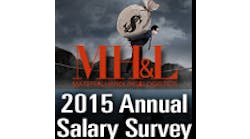Imposing a tax on U.S.-bound cargo brought into Mexican and Canadian ports could violate international trade laws and would not drive traffic back to U.S. ports, said the National Retail Federation this week in a filing to the Federal Maritime Commission.
“There are numerous factors that retailers use when deciding their supply chain operations and what ports they will use to get products to their store shelves,” said NRF President and CEO Matthew Shay. “Critical to these are service, reliability and speed to market. Applying a Harbor Maintenance Tax to cross-border traffic will not drive cargo back to the U.S. for distribution.”
Shay said federal, state and local policies that encourage investment in infrastructure projects to make ports more efficient and reduce transit times could help shippers choose U.S. ports over foreign ports. He urged U.S. officials to look at work done with Canadian ports “as an example of what is needed for a national freight policy that will help make the U.S. more competitive.”
Shay’s remarks came in comments filed today with the FMC, which is examining whether the federal Harbor Maintenance Tax should be imposed on cargo that is brought into Mexican and Canadian ports and then delivered to U.S. destinations by train or truck. The commission began the examination at the request of Senators Patty Murray and Maria Cantwell, both D-Wash., who voiced concern this summer that ports in Tacoma and Seattle are losing traffic to the Port of Prince Rupert in British Columbia. House members from other port states have also asked the commission to look at the issue.
Importers bringing retail merchandise and other cargo into U.S. seaports pay a Harbor Maintenance Tax of 0.125 percent of declared value, averaging $137 per cargo container and amounting to more than $1 billion a year. The tax was created in the 1980s to help pay for port projects and maintenance but NRF and others have expressed concern that most of the money collected has been diverted to other uses or left in reserves while critical infrastructure work goes unfunded.
Most U.S.-bound retail merchandise from Asia enters the country through U.S. ports on the West Coast while most other merchandise comes into the country through East Coast ports, as followed by NRF’s monthly Global Port Tracker report. However, shippers began diversifying their use of ports after 9/11 and labor issues at West Coast ports in 2002 and 2004.
Shay said retailers have found that total transit times from northern Asia to distribution centers in the U.S. Midwest can be two to three days shorter when using a Canadian port than using West Coast ports. Faster and more efficient rail service between Prince Rupert and Chicago play a key role in the advantage, he said. Nonetheless, the comparatively small size of marine terminals at Prince Rupert limit the port’s capacity, and the amount of cargo that goes to either Canadian or Mexican ports is only about 6 percent of the U.S. total, he said.
Shay said NRF believes taxing cargo brought in through Canada or Mexico could violate provisions of both the North American Free Trade Agreement and the General Agreement on Trade and Tariffs enforced by the World Trade Organization.

